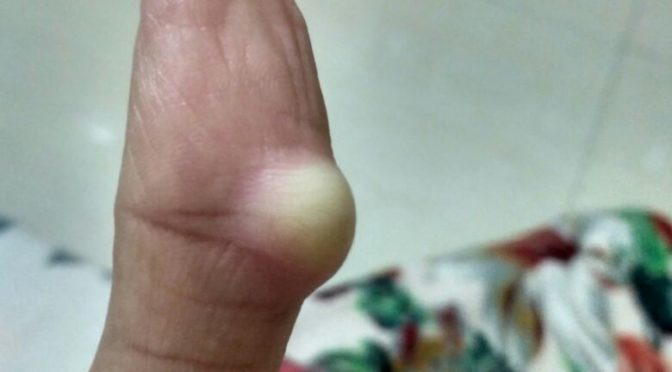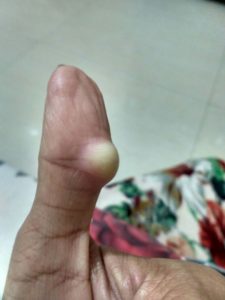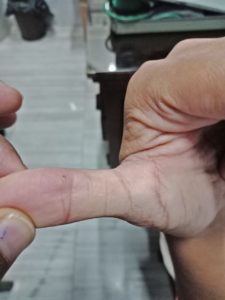Urinary Tract Infection is an infection in any part of the urinary system i.e kidney, ureters, bladder and urethra.
Infection of the urinary tract is a very common and distressing condition.
Acute infections of urinary tract can be anatomically subdivided into two general catagories.
Lower urinary tract infection
Upper urinary tract infection
Infections at these sites may occur together or independently and may be asymptomatic or may present with clinical symptoms.
When there are recurrent infections it can be classified as relapses or reinfections. Most relapses are thought to result from unresolved prior infections.
CAUSES OF URINARY TRACT INFECTIONS
Many different micro organisms can infect the urinary tract, most common agents are the gram negative bacilli.
Ecoli causes approximately 80% of acute infections in patients and other organisms are proteus, klebsiella, enterobacter, pseudomonas, chalamydia etc.
PATHOGENESIS of URINARY TRACT INFECTION
Adhesion of bacteria is the first step in the pathogenesis of Urinary tract infectiion.
The entry of uropathogens into the urinary tract is usually from periurethral colonisation of females or often from prepucial colonisation of uncircumcised males. About 75% of organisms is distal urethra are a mixture of lactobacilli, streptococci, staphylococci, while remaining 25% are anaerobic. When the host defenses are weakened urtheral colonisation and mucosal adhesion of bacteria occurs.
Usually in a normal healthy individual a series of non specific and specific mechanisms prevent this process.
The non specific mechanisms are the flushing effect of urine, normal vaginal flora and tamm horsfall glycoprotein which complexes with bacteria and are eliminated through urine.
Circulating IgG and IgM in upper urinary tract act as specific immunological mechanisms.
Secretory IgA in the upper and lower urinary tract particularly the urethra provide a barrier to ascent of infection. In addition to humoral defence, cellular response also plays a role in preventing ascent of infection.
FACTORS INVOLVED IN THE PATHOGENESIS OF URINARY TRACT INFECTION
HOT SUMMER CLIMATE
There is lots of water loss from the body surface through pirspiration in form of sweat which causes depletion, it sufficient water is not consumed thos might lead to change in ph level of urine making it acrid which may excoriate the inner linning of urinary tract thus making it more sussceptible to infections.
LOW WATER INTAKE
Low water intake causes increase in concerntration of metanolites in urine making it more corrosive in nature to inner linning of urinary system thus damaging it and giving opportunity yo organsims to infect and colonise in urinary system.
DIABETES
High sugar levels are associated with infections as they not only reduce immunity but also provide with instant and easy source energy for micro-organosms to multiply and grow
IMMUNOCOMPROMISED INDIVIDUALS
Immunocompromised imdividuals especially those on therapy with drugs known to suppress immunity, individuals with Human Immunodeficiency Virus Infection, Diabetics and other immunodeficiency disease conditions provide easy breeding ground for opportunistic micro-organisms to infect immunocompromised tissue of urinary system.
PRE-EXISTING GENITAL INFECTIONS
Pre-existing genital infection may fimd route from genitals to urinary tract and may infect it as well which is more common in females also in females ots seen that skin infecyions of vulva may traverse intonthe urinaty system and may infect it.
FEMALE ANATOMY
Female are more prone to the development of Urinary tract infection. Women have a shorter urethra, wbich shortens the distance that bacteria must travel into the urinary tract. Gram negative enteric organisms risiding near anal region colonise the periurethral region and cause infections.
USE OF BIRTH CONTROL DEVICES
Women who use diaphragm as a birth control have a high risk of urinary tract infections.
MENOPAUSE
After menopause there is decline in the oestrogen level causes changes in urinary tract and that make a women more vulnerable to infections.
SEXUAL ACTIVITY
Sexually active women tend to have more tendency to have urinary tract infections, as the act facilitates the entry of introital bacteria into the bladder.
BLOCKAGES IN URINARY TRACT
Any impediment to free flow of urine as with renal calculi, strictures,, tumors, prostatic hypertrophy favour the development of Urinary tract infections.
URINARY TRACT ABNORMALITIES
Babies born with urinary tract abnormalities that hinder the flow of urine to leave the body normally or cause urine to back flow urine up in urethra have a increased risk of Urinary tract infection.
CATHETHER USE
Use of catheters have a high risk of urinary tract infections. This may include in patients who are hospitalised, amd im some cases it also advised on daily basis especially in patients with urethral stricture, patients who are having neurological abnormalities, paraylsed patients which make it difficult to control their ability to urinate.
CLINICAL FEATURES OF URINARY TRACT INFECTION
The clinical features depend on whether the infection is on upper tract or lower tract.
CYSTITIS OR URETHRITIS
Infection in bladder is common in women during thier reproductive years. Patient with cystitis or urethritis may be asymtomatic or may present with frequency, urgency, suprapubic pain and dysuria, nocturia, urge incontinence, a sensation of incomplete bladder emptying may accompany lower urinary tarct infection.
The urine may have offensive odour and haematuria occurs in 30% of cases. On physical examination usually reveals mild suprapubic or urethral tenderness.
PROSTATITIS AND SEMINAL VESICULITIS
The usual symptoms of prostatic infection are frequency, dysuria, perineal or groin pain, difficulty in voiding urine and painful ejaculation. Relapsing urinary tract infections are associated with above symptoms in men are suggestive of chronic bacterila prostatitis.
ACUTE PYELONEPHRITIS
Emphysematous pyelonephritis is a particularly severe form of upper urinary tract infection.
Symptoms of acute pyelonephritis include fever with chills, nausea, vomiting and diarrhoea.
Physical examination reveals tachycardia, myalgia, renal angle tenderness. Most patients have significant leucocytosis and bacteria detectable in gram stained urine.
CHRONIC PYELONEPHRITIS
Chronic pyelonephritis is known to develop as a result of infection and vesicoureteric reflex. It is a form of upper urinary tract infection. Many patients remain asymtomatic for a long time and present with symptoms later.
ROLE OF HOMOEOPATHY IN TREATMENT OF URINARY TRACT INFECTION
Homoeopathy plays a very significant role in the management of Urinary tract infections. In homoepathy we adopt a holistic approach to Urinary tract infection with a detailed case analysis and individualisation of each patient.
FEW INDICATED HOMOEOPATHIC REMEDIES
CANTHARIS
Cantharis has main sphere of action on the genito urinary system.Indicated in case of urinary tract infection. Cantharis patient has intolerable urging and tenesmus. Frequent urge to pass urine. This is one of the important symptom which points towards cantharis. There is intense burning and cutting pain during urination. Severe back pain, violent paroxysms of cutting burning pain in whole renal region. Urine scalds and is passed drop by drop.
STAPHYSAGRIA
Staphysagria is more commonly indicated in Urinary tract infections in female. Suited to women who are newly married and have ineffectual desire to urinate, as a result of sexual activity.,often known as honeymoon cystitis. Presents with burning in urethra while urinating. Feeling of pressure on the bladder with sensation as if undone completely. Sensation as if drop of urine is rolling continously along urethra. Prostatic enlargements which cause infections in urinary tract can also be very well managed with Staphysagria.
BENZOIC ACID
Benzoic acid is indicated remed in urinary tract infections, when there is a very strong smell in urine, the odour is as if that from horse urine. Another strong symptom that indicates Benzoic acid is intense pain in urethra. Also indicated in cystitis. The complaints of benzoic acid are changeable. When the urine is scanty or light he suffers from backache and pain in joints. When the urine is copious and plenty and urine is full of deposits he feels better. Presents with alternate light and heavy urine.
APIS MELLIFICA
Apis mellifica acts on the urinary system and presents with burning at the end of urination. The urine may be scanty,despite scanty urine the patient has constant urge to urinate. Urine is dark coloured or muddy. Presents with burning and soreness when urinating. A great anasarca appears and the face is swollen with bags under eyes. Great agony in voiding urine. Unconcious flow of urine.
SARSAPARILLA
Sarsaparilla acts through the ganglionic system upon the genitourinary system . Its is one of the indicated remedies in irinary tract infection when urine is either too often or too copious pale and scanty. There is much pain at the conclusion of passing urine, which is almost unbearable. Patient has to wake up two to three times at night to pass urine. Pain in the bladder region or lower abdomen extends to back.
BERBERIS VULGARIS
Berberis vulgaris has affinity towards the genito urinary system. Berberis is indicated in urinary tract infections. Cystitis with twings of cutting pain or burning sensation that extends towards the urethra and its opening may indicate the need for this remedy. There is no desire to urinate. After emptying the bladder the patient feels some urine is left inside, undone sensation. There are irregularities of urine, with copius discharges. There is Changeability of urine like benzoic acid.
LYCOPODIUM
Lycopodium is one of the indicated remedy in urinary tract infection. A marked feature or one of the prominent feature of lycopodium is polyuria during night must arise at night and pass large quantity of urine.,altough day time urine is normal. Painful urge to urinate, but has to strain to pass urine. Pain is felt at the back before passing urine. Flow of urine is slow and with feeble stream. The urine is often muddy with brick dust or with red sand deposits.
SULPHUR
Sulphur has a important role in urinary tract infection. The patient has unsual desire to pass urine at night. The most characteristic symptom that indicates the use of sulphur is great burning sensation while passing urine. Frequent micturation, enuresis. Mucus and pus in urine, parts sore over which it passses. Has sudden call to urinate must hurry. The urine scalds the urethra while passing urine and smartine is so intense that it lasts for a long time after urination.
CLEMATIS ERECTA
Clematis has main sphere of action on the genito urinary tract. Its is very effective for urine infections in patients who have suffered from sexually transmitted disease. Slow inflammation of urethra will infilterate and urethra feels like a large whip cord, painful on pressure. Patient cannot emtpty bladder completely. He has undone sensation, when he appears to have finished urinating, it wil keep dribbling often. Presents with frequent scanty urination.
PREVENTIVE MEASURES IN URINARY TRACT INFECTION
Some useful steps to reduce your risk of Urinary tract infections
Stay hydrated, drink plenty of liquids. Drinking enough water helps to dilute your
urine and hence ensures that you will urinate more frequently allowing the bacteria to be flushed from your urinary tract.
Urinate frequently, do not hold urine when you need to urinate. Holding urine when you need to evacuate can help the bacteria present that may develop into infectiions.
Emtpty your bladder soon after intercourse and drink enough water to flush out the bacterias.
Maintain good hygeine. Keep genital area clean, after urinating and bowel movement always clean the area from front to back by doing so it wil prevent bacteria in anal region from spreading to vagina and urethra.
Avoid using scented feminine products and use of douches, diaphragms which can cause irritation and infections which contribute to bacterial growths leading to urinary tract infections.
Wear comfortable cotton undergarments as other fabrics can trap moisture creating a potential breeding for bacteria. Avoid tight clothing.




